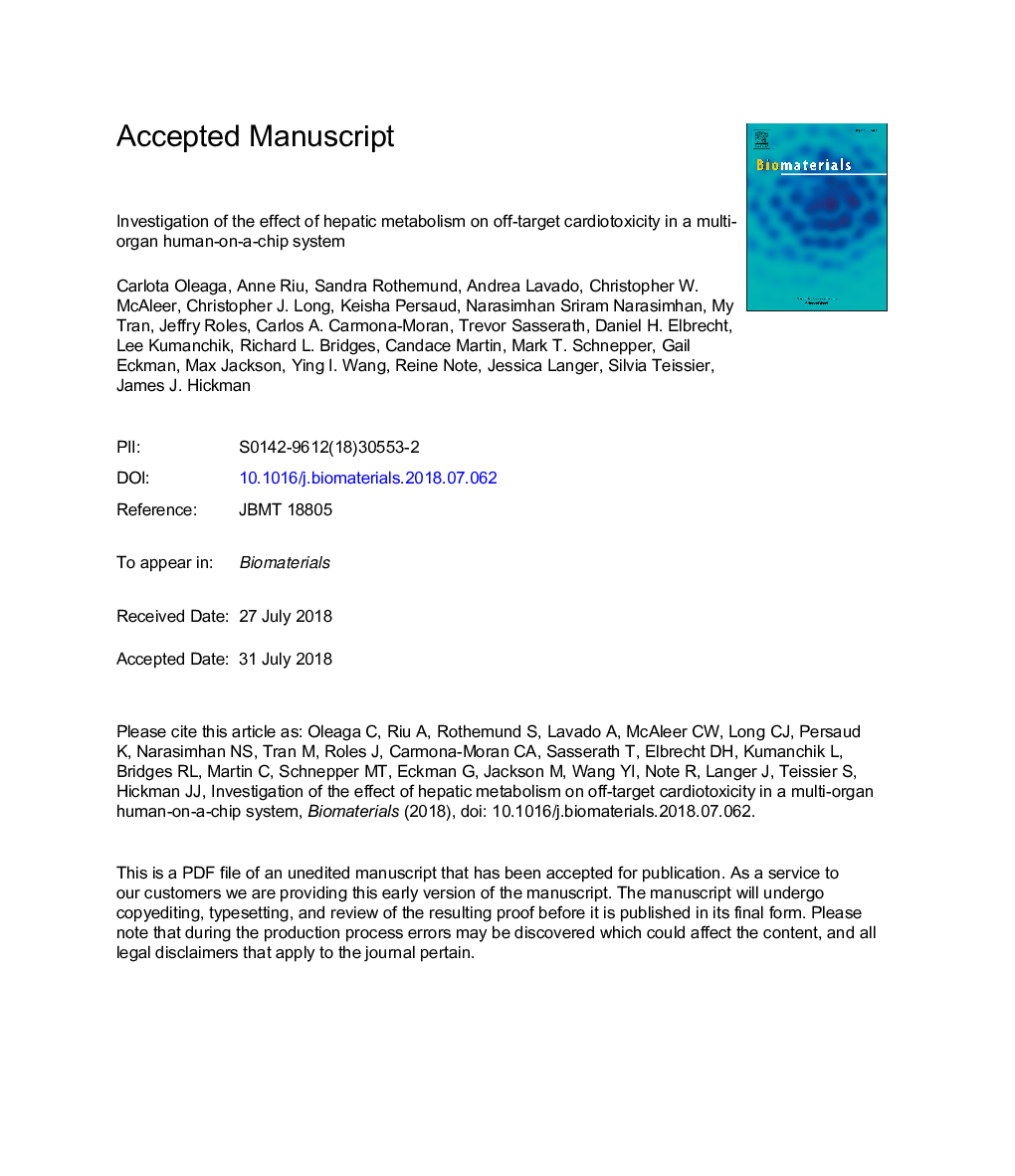| Article ID | Journal | Published Year | Pages | File Type |
|---|---|---|---|---|
| 10999771 | Biomaterials | 2018 | 49 Pages |
Abstract
Regulation of cosmetic testing and poor predictivity of preclinical drug studies has spurred efforts to develop new methods for systemic toxicity. Current in vitro assays do not fully represent physiology, often lacking xenobiotic metabolism. Functional human multi-organ systems containing iPSC derived cardiomyocytes and primary hepatocytes were maintained under flow using a low-volume pumpless system in a serum-free medium. The functional readouts for contractile force and electrical conductivity enabled the non-invasive study of cardiac function. The presence of the hepatocytes in the system induced cardiotoxic effects from cyclophosphamide and reduced them for terfenadine due to drug metabolism, as expected from each compound's pharmacology. A computational fluid dynamics simulation enabled the prediction of terfenadine-fexofenadine pharmacokinetics, which was validated by HPLC-MS. This in vitro platform recapitulates primary aspects of the in vivo crosstalk between heart and liver and enables pharmacological studies, involving both organs in a single in vitro platform. The system enables non-invasive readouts of cardiotoxicity of drugs and their metabolites. Hepatotoxicity can also be evaluated by biomarker analysis and change in metabolic function. Integration of metabolic function in toxicology models can improve adverse effects prediction in preclinical studies and this system could also be used for chronic studies as well.
Keywords
Related Topics
Physical Sciences and Engineering
Chemical Engineering
Bioengineering
Authors
Carlota Oleaga, Anne Riu, Sandra Rothemund, Andrea Lavado, Christopher W. McAleer, Christopher J. Long, Keisha Persaud, Narasimhan Sriram Narasimhan, My Tran, Jeffry Roles, Carlos A. Carmona-Moran, Trevor Sasserath, Daniel H. Elbrecht, Lee Kumanchik,
